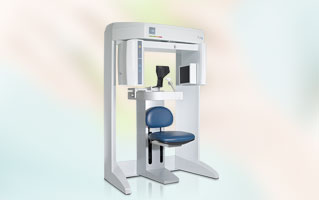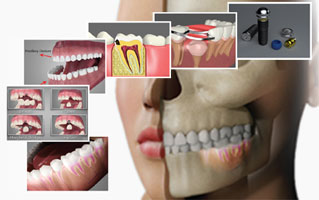Bone Grafting Treatments
Extraction of a tooth causes resorption of the supporting bone. Bone resorption causes a 40-60% decrease in its width during the first three years following extraction. Bone resorption occurs at the expense of the outer plate of bone reducing the width of bone. Then overtime the height of bone is reduced. This becomes critical for anterior implants where ideal aesthetics, phonetics and function is desired. In the upper jaw following extraction the sinus floor begins to expand further decreasing the available bone to place implants in the posterior maxilla. In the lower jaw the mandibular nerve runs in the bone limiting the length of the implant placed.
Bone Grafting can be used as a socket preservation procedure when it is placed following extraction of a tooth or to augment an atrophied or reabsorbed site.
Bone Grafting Procedures Ridge-augmentation
In severe cases of ridge resorption bone graft is placed to increase the ridge height and or width.
Sinus Lift and Graft Procedure
This procedure involves elevating the sinus membrane and placing the bone graft onto the sinus floor, allowing implants to be placed in the back part of the upper jaw.
Nerve - repositioning
The mandibular nerve may need to be moved in order to make room for placement of dental implants in the lower jaw.
These procedures may be performed separately or together, depending upon the individual's condition. There are several areas of the body which are suitable for attaining bone grafts. In the maxillofacial region, bone grafts can be taken from inside the mouth, in the area of the chin or third molar region or in the upper jaw behind the last tooth. In more extensive situations, a greater quantity of bone can be attained from the hip or the outer aspect of the tibia at the knee.
Several bone augmentation materials are available to stimulate and encourage bone growth in areas where it is lost as a result of pathological or physiological processes.
Bone grafting materials can be derived from various sources
- Allograft materials derived from cadaver bone of the same species
- Autogeneous material derived from the recipient's intra-oral or extra-oral site
- Alloplastic materials are exclusively derived from synthetic sources
- Xenografts derived from the inorganic portion of animal bone
Bone Grafting will help to place larger diameter implants in ideal locations that are stable and serviceable for a long time. It also helps to establish normal volume and dimensions of bone for ideal aesthetics, lip support and phonetics.





